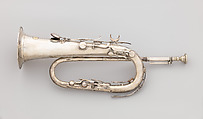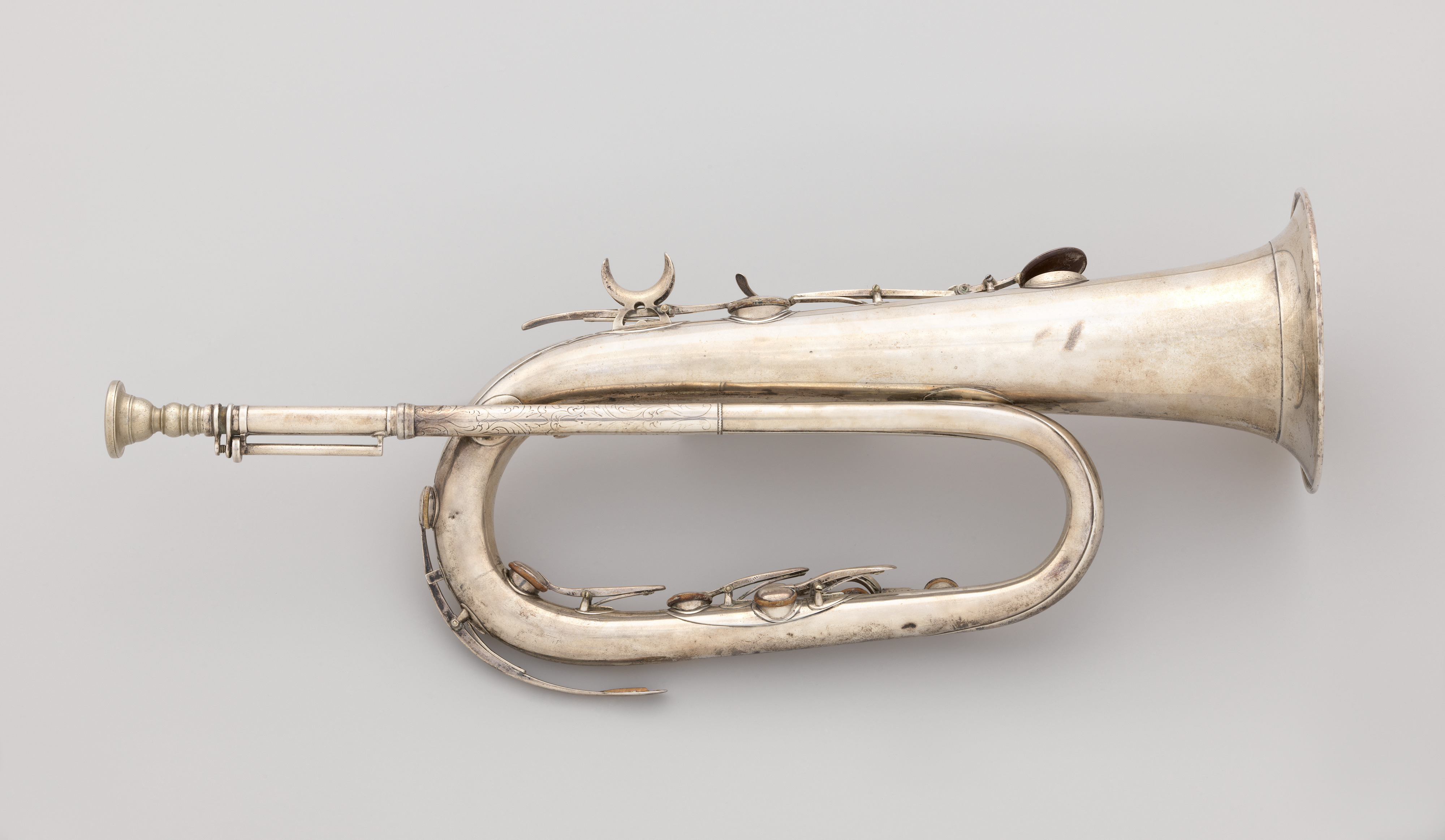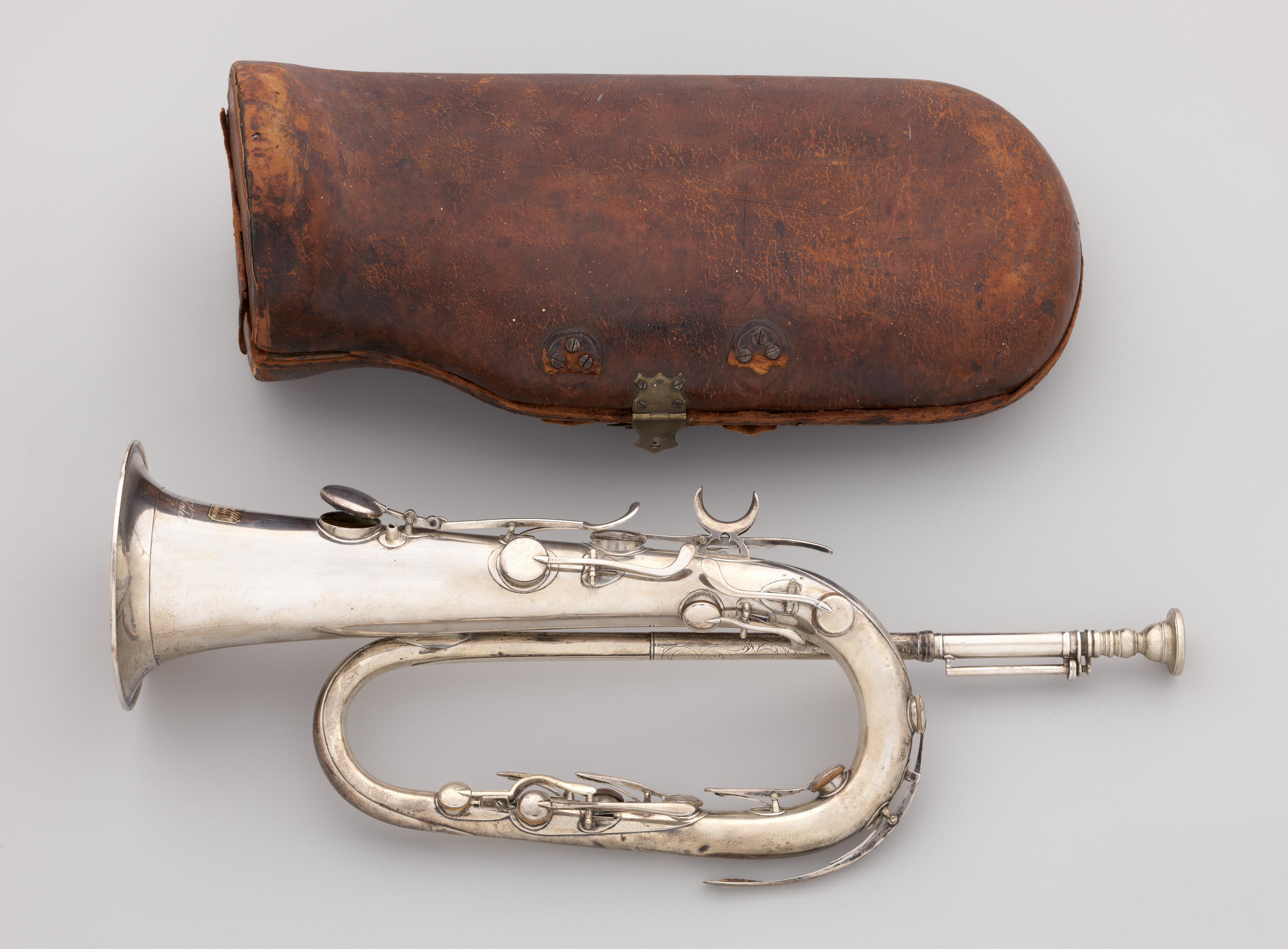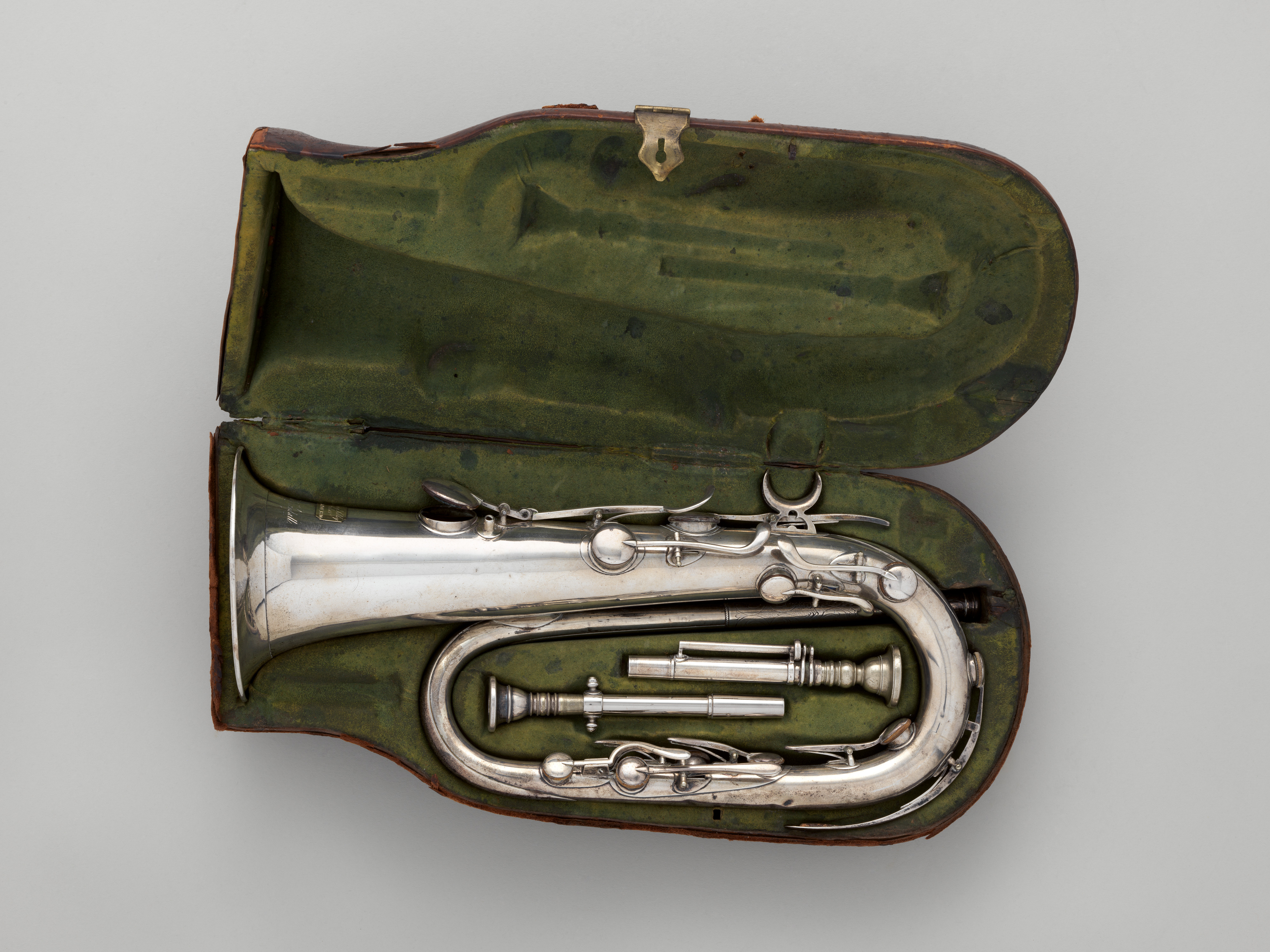Keyed bugle in E-flat
Henry Sibley American
The keyed bugle was a particularly prominent brass instrument in America during the mid-nineteenth century. It was a featured solo instrument in military and civilian bands through the 1860s, despite the advent in 1814 of valved brass instruments, which produce a louder and more homogenous sound. In the US, the keyed bugle remained the preeminent solo brass instrument long after the cornet was adopted in Europe. Consequently, the instrument attained a more sophisticated key system and production values in the US.
This keyed bugle by the Boston maker Henry Sibley is associated with Edward Kendall, the most celebrated US performer of the instrument. Kendall played with a number of bands including the celebrated Boston Brass Band and toured throughout the country. He is remembered for his encounter with the band leader Patrick Gilmore, with whom he entered into a musical duel. The contest pitted Kendall, performing on keyed bugle, against Gilmore on cornet. While the keyed bugle was prized for its warm sound and subtle tonal inflections, the more technically agile cornet eventually became the undisputed leader of the band.
Sibley was the first notable US maker of keyed bugles. Modification of placement of the tone holes on this example suggest that Kendall and Sibley may have worked together to refine the design of this instrument. Sibley’s instruments clearly informed the design of later keyed bugles by E.G. Wright, including an example held in the Met collection (2004.269a-e, made in 1854)
This image cannot be enlarged, viewed at full screen, or downloaded.
This artwork is meant to be viewed from right to left. Scroll left to view more.







